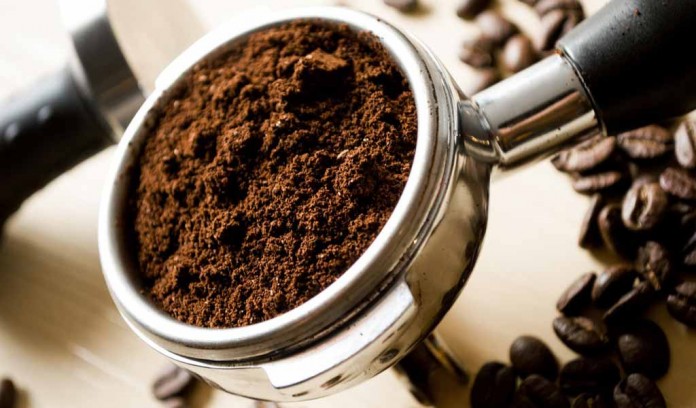(This article was last updated April 18, 2016)
Instead of tossing your used coffee grounds in the garbage can, toss them in your garden or compost pile.
Research varies when it comes to using coffee grounds in the garden or compost pile, but some results have shown that coffee grounds are beneficial.
Here are 4 benefits of using coffee grounds:
1. Coffee grounds are high in nitrogen
Coffee grounds are a source of nitrogen that can help to improve soil structure. They can be spread right on top of the soil, or mixed or cultivated into the soil.
Coffee grounds do not serve as a nitrogen fertilizer, though. Oregon State University Extension recommends adding a nitrogen fertilizer at the same time as adding coffee grounds.
Earthworms may feed on decomposing coffee grounds, aiding in soil aggregation. Once coffee grounds break down, they will benefit plants, as a University of Illinois Extension educator explains.
2. Coffee grounds can be added to compost
Since coffee grounds contain nitrogen, they are the perfect addition to compost piles. Compost requires nitrogen, carbon, water and oxygen. Coffee grounds have a carbon-to-nitrogen ratio of 20:1.
More about composting:
Vermicomposting: How to turn waste into compost over winter
Coffee grounds are not necessarily acidic. According to Oregon State University Extension, coffee grounds typically have a pH between 6.5 and 6.8, making them close to neutral. Other studies have shown varying pH levels of coffee grounds, especially during decomposition.
A limited amount of coffee grounds can be added to compost in order to reap the benefits. Be sure to add coffee grounds along with an equal amount of a carbon source, like shredded paper or cardboard, dry leaves or even shredded paper coffee filters.
Oregon State University Extension recommends layering coffee grounds with leaves (dry material) and grass clippings (green material). Layer ⅓ leaves, ⅓ fresh grass clippings and ⅓ coffee grounds.
3. Coffee grounds can suppress certain fungi and bacteria
Coffee grounds have been shown in controlled studies to suppress some fungal rots and wilts, like Fusarium and Pythium, as well as some bacterial pathogens, including E. coli, once they decompose.
Dr. Linda Chalker-Scott, Ph.D. says that no more than 20 percent of a compost pile should be comprised of coffee grounds since just small amounts are necessary for suppressing diseases.
4. Coffee grounds can be used as mulch
While experts don’t advise using solely coffee grounds as mulch, a ½-inch layer of coffee grounds along with a 4-inch layer of wood chips or other coarse material works well as mulch, according to Dr. Linda Chalker-Scott, Ph.D.
If only coffee grounds are used as mulch, they may compact and restrict airflow and moisture. The addition of coarse material will help with air movement and moisture.
Additional uses: Coffee Grounds for Gardening — 8 Different Uses
Do you use coffee grounds in your garden, compost pile or as mulch? Tell us what you think in the comments below.















